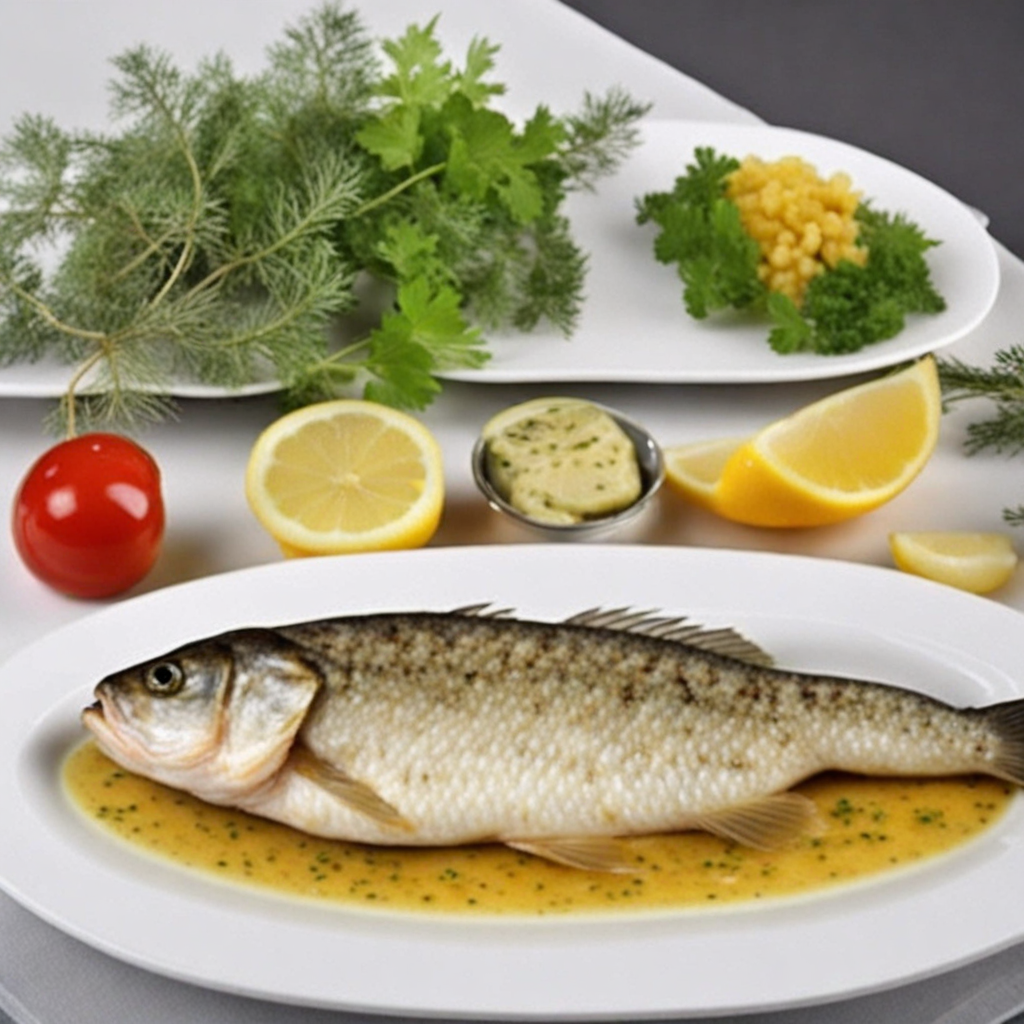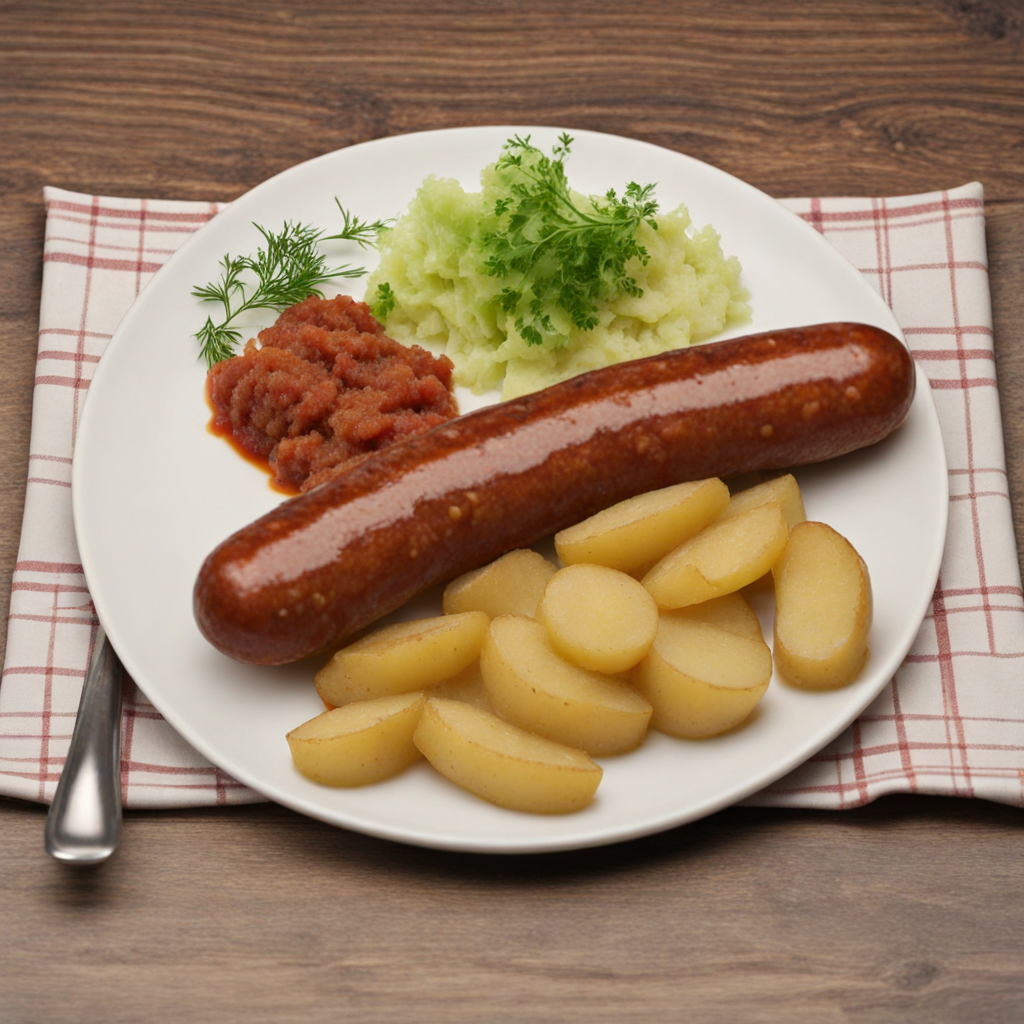Swedish Pike Perch
Swedish Pike Perch, known as "Abborre" in Swedish, is a freshwater fish renowned for its delicate flavor and firm texture. This species thrives in the pristine lakes and rivers of Sweden, making it a popular choice among both local chefs and home cooks. The fish boasts a mild, slightly sweet taste, complemented by a subtle hint of nuttiness, making it versatile for various culinary preparations. It is often compared to other popular fish like walleye and perch, but its unique flavor profile sets it apart, inviting adventurous eaters to explore new gastronomic horizons. The preparation of Swedish Pike Perch is often simple, allowing the natural flavors of the fish to shine. It can be grilled, baked, or pan-fried, and is frequently paired with traditional Swedish ingredients such as dill, lemon, and capers. In many recipes, the fish is lightly seasoned to enhance its taste, while accompaniments like creamy sauces or roasted vegetables provide a delightful contrast. This approach not only showcases the fish's freshness but also highlights the essence of Swedish cuisine, which emphasizes quality ingredients and straightforward preparations. When served, Swedish Pike Perch presents beautifully, with its pale, flaky flesh and pleasing appearance. The fish is often accompanied by seasonal sides like boiled potatoes, lingonberries, or a crisp salad, making for a wholesome and satisfying meal. Whether enjoyed in a rustic lakeside cottage or a modern urban restaurant, the experience of tasting Swedish Pike Perch is a celebration of Sweden's rich culinary heritage and the natural bounty of its waters, making it an unforgettable addition to any food lover's journey.
How It Became This Dish
The History of Gös: A Culinary Gem of Sweden #### Origins Gös, commonly known as pike-perch or zander (Sander lucioperca), is a freshwater fish that has become an emblem of Swedish cuisine. Native to the rivers and lakes of Europe and parts of Asia, pike-perch is renowned for its delicate flavor and firm, white flesh. In Sweden, it thrives in the clear waters of its many lakes, particularly in regions like Vänern, Vättern, and Mälaren, where it has been a staple for centuries. The history of Gös in Sweden can be traced back to the early settlements along these waterways. Archaeological findings suggest that ancient Swedish communities depended heavily on fish as a primary source of protein. The pike-perch was particularly prized for its taste, leading to its prominence in local diets. The Scandinavian climate, often harsh and unforgiving, made the availability of fresh fish a crucial aspect of survival and sustenance for many communities. #### Cultural Significance In Sweden, Gös is more than just a food item; it is entwined with cultural identity and traditions. The fish holds a special place in Swedish gastronomy, celebrated for its versatility and adaptability in various culinary preparations. Historically, pike-perch was often prepared in simple ways, reflecting the resourceful nature of rural Swedish cuisine. It was typically caught during the fishing season and preserved through methods such as smoking, salting, or pickling, which allowed communities to enjoy it throughout the year. Moreover, Gös has found its way into Swedish folklore and local traditions. Fishermen would often tell tales of the ‘big catch’—the legendary pike-perch that would bring good fortune to the fisherman. Communities would gather for fishing festivals, where competitions were held to see who could catch the largest Gös. These gatherings fostered a sense of camaraderie and shared heritage, reinforcing the importance of fishing to local economies and social structures. #### Development Over Time As Sweden progressed through the ages, the preparation and consumption of Gös evolved, reflecting broader culinary trends and influences. In the 19th century, as Sweden began to embrace more formal dining customs, pike-perch became a favored dish among the burgeoning middle class. Cookbooks from this period began to feature Gös prominently, introducing more refined techniques and recipes. One of the most notable preparations of Gös is the classic “Gös med vit sås” (Pike-perch with white sauce), a dish that encapsulates the essence of traditional Swedish cooking. The fish is typically poached and served with a creamy white sauce, often flavored with dill or capers, accompanied by boiled potatoes and seasonal vegetables. This dish reflects the Swedish affinity for simplicity and freshness, allowing the natural flavors of the fish to shine. The 20th century saw further evolution in the ways Gös was prepared and enjoyed. The rise of modern gastronomy introduced innovative techniques, such as sous-vide cooking and elaborate plating, which elevated Gös to new culinary heights. Chefs began experimenting with different flavor profiles, incorporating global influences while still honoring the fish's Swedish roots. Gös was increasingly featured in upscale restaurants, showcasing the fish not only as a local delicacy but also as a gourmet experience. #### Gös in Contemporary Cuisine Today, Gös continues to hold its esteemed position in Swedish cuisine, both in homes and restaurants. The fish is celebrated for its sustainability, a crucial aspect in modern dining as consumers become more conscious of their food choices. Swedish fisheries, focusing on responsible practices, ensure that Gös populations remain healthy while providing fresh and high-quality fish to markets. Moreover, the advent of the farm-to-table movement has revived interest in traditional Swedish ingredients and dishes, including Gös. Chefs across the country are reinterpreting classic recipes while emphasizing local sourcing, making Gös a central feature in contemporary menus. From rustic preparations to avant-garde presentations, the versatility of pike-perch allows chefs to experiment while respecting its heritage. In addition to its culinary significance, Gös has also found a place in Swedish celebrations and seasonal festivities. During Midsummer, for instance, many families will prepare dishes featuring pike-perch as part of their traditional feasts. Similarly, during the Christmas season, it may be included in the smorgasbord, showcasing the fish’s importance in festive gatherings. #### Conclusion The history of Gös in Sweden is a rich tapestry woven from centuries of cultural significance, culinary evolution, and community tradition. From its humble beginnings as a vital source of sustenance for early Swedish settlers to its prominent place in modern gastronomy, Gös embodies the essence of Swedish cuisine—fresh, simple, and deeply rooted in local practices. As Sweden continues to celebrate its culinary heritage, Gös remains a symbol of the country’s connection to its natural resources and the importance of sustainability. Whether served in a fine dining establishment or enjoyed at a family gathering, Gös continues to be a cherished part of Swedish identity, reflecting the nation's respect for its natural bounty and culinary traditions. In a world where food often transcends borders, Gös serves as a delicious reminder of the enduring power of local ingredients and the stories they tell.
You may like
Discover local flavors from Sweden







